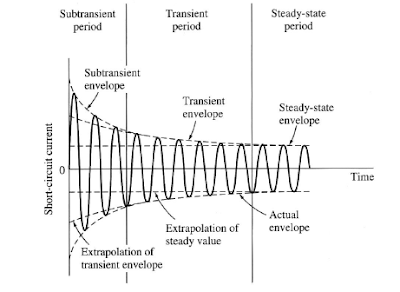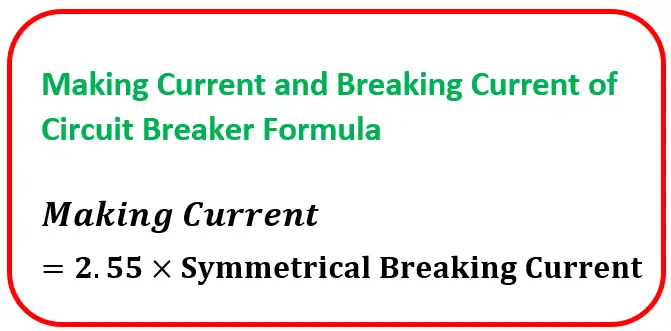A circuit breaker is an essential protection device used to switch electrical circuits on and off and to isolate faulty sections in the event of a fault. Among its important performance parameters are the making current and breaking current of circuit breaker, which define its ability to handle fault conditions.
These parameters become especially critical during short circuits—when the breaker may need to interrupt or close onto extremely high currents.
In this article, we’ll explore the meaning of making and breaking current, how they differ, and why the making current is always higher than the breaking current.
Breaking Current of Circuit Breaker
The braking current capacity of the circuit breaker is the maximum fault current that can flow through the circuit breaker for a short period from the time of the short occurrence till the clearing of the fault without any permanent damage.
The breaking current capacity or short circuit breaking current of the breaker is expressed in KA(RMS). The circuit breaker of 40 KA short circuit interrupting capacity can break the 40 KA current without getting damaged.
Making Current of Circuit Breaker
The making current of the circuit breaker is the maximum peak value of the current that the breaker can interrupt without any damage if the breaker is closed at fault.
Understanding the Time Periods After a Fault
To understand why the making current of the breaker should be more than its breaking current, let’s discuss how the fault current behaves and what is the characteristics of the fault current.
When a fault occurs in the electrical network, the AC and DC current is present. The DC current magnitude is about 60 to 80 % of the AC curren-resulting in a very high initial fault current—especially during the first few cycles.
This fault current behavior can be divided into three distinct time periods: the sub-transient, transient, and steady-state periods.
The waveform of the fault current, including its symmetrical AC component and decaying DC offset, is illustrated below.

Sub-transient period
During the sub-transient period, the fault current is at its maximum. The AC component is very large and decays rapidly, while the DC component, which can be 60% to 80% of the AC value, also begins to decay.
This period typically lasts for 1 to 2 cycles and represents the most severe stress condition for the circuit breaker.
Transient period
In the transient period, the fault current continues to decay but at a slower rate compared to the sub-transient period. The DC component has mostly dissipated, and the system is transitioning toward stability.
Steady-state period
During the steady-state period, the fault current settles to a stable symmetrical AC value. The current remains constant unless interrupted or cleared by the circuit breaker or protection system.
Relationship between Making and Breaking Current
Let the symmetrical breaking current be I amperes (RMS).
The peak value of the symmetrical breaking current is
= √2 x I
=1.414 x I
During the sub-transient period, the DC current is also present for one to two cycles. The magnitude of the DC current is approximately equal to the peak value of the symmetrical breaking current.
The peak value of the current during the sub-transient period is
Making current = 1.414 x I x 1.8
= 2.55 x I
Making current = 2.55 x Symmetrical breaking current

Making and Breaking Current Formula Example
If the symmetrical breaking current capacity of a circuit breaker is 40 kA (RMS), then the making current can be calculated using the standard factor of 2.55:
Making Current=2.55×Symmetrical Breaking Current
=2.55×40
=102kA (peak)
This means the breaker must be able to withstand and close onto a peak current of 102 kA during a fault without damage.
Conclusion
The making and breaking current are critical parameters for selecting the right circuit breaker. Making current is the highest peak current that occurs when the breaker closes during a fault, while breaking current is the maximum current the breaker can interrupt safely.
Understanding this relationship helps ensure that the circuit breaker can handle real-world fault conditions without damage, maintaining both system safety and equipment reliability.
Related Articles: